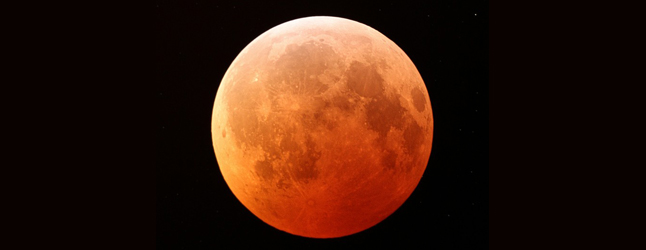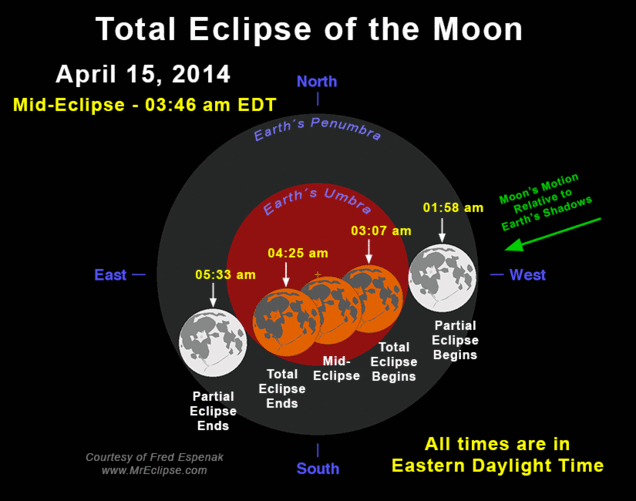
Look! Up in the sky! It’s a bird! It’s a plane! No it’s a lunar eclipse and — oh! — the planet Mars!
If you like doing a little celestial gazing you’ll enjoy watching the lunar eclipse due to occur late Monday night/early Tuesday morning as the Red Planet cruises through the sky to east of the Moon.
Yes, Mars is very visible to the naked eye. It’s that red-pink light in the sky near the moon. In fact, Mars is bigger and brighter than it has been since 2008. The last total lunar eclipse to be visible from North America took place in December 2010, but Monday night’s will kick off a series of four such events in what NASA is calling a “tetrad” of total lunar eclipses. According to NASA, the total eclipse in the early morning of April 15 will be followed by another on October 8, and again on April 4 and September 28 of next year.
You may have heard tomorrow’s eclipse referred to as a “blood moon,” which, certainly sounds cool, but actually has religious origins (insofar as they are evidently relevant to biblical prophesy), not an astronomical one. As the good folks at EarthSky put it: “We can’t really tell you why more and more people are using the term Blood Moon to describe the four full moons of a lunar tetrad. We don’t know why, exactly.”
In order to see this you’ll have to either stay up late the night of Monday April 14, or set your alarm for very early Tuesday, April 15.
The lunar eclipse begins April 15 at 4:37 Universal Time (that’s 9:37 pm Pacific Time), when the Moon enters the western edge of Earth’s shadow. The best views, however will come shortly after 7 UT (midnight Pacific Time), at the start of totality. This deepest, darkest period of the eclipse will last until almost 1:30 am Pacific and should make for a stunning view with Mars accompanying it through the night sky.
Got clouds? No problem. According to spaceweather.com the event will be broadcast live on the web by the Coca-Cola Science Center at Columbus State University in Georgia.
For more information about the eclipse, get the full story and a video from Science@NASA.




